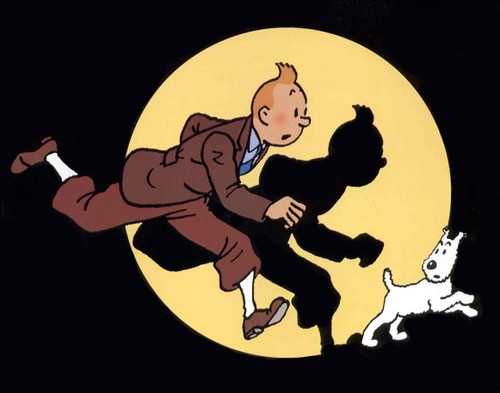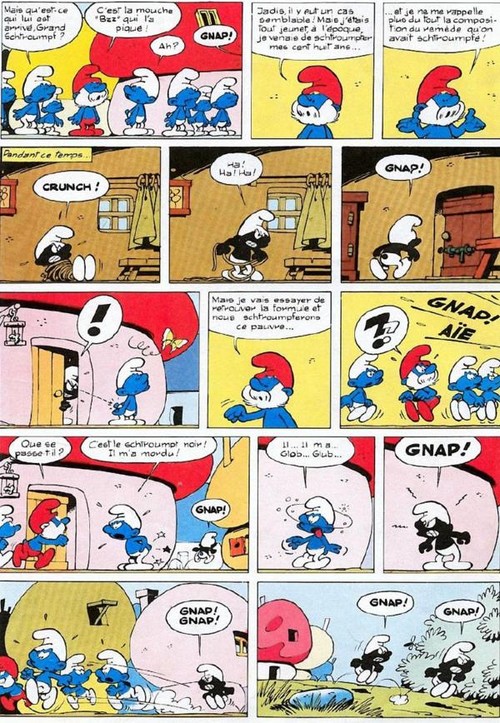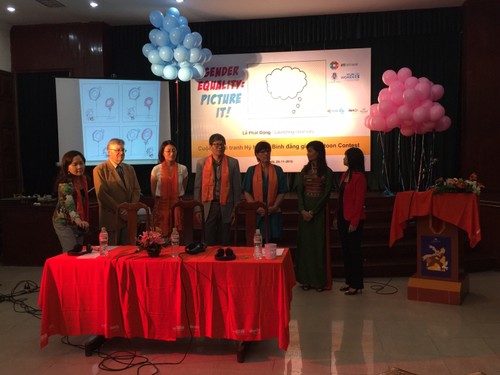(VOVworld) - Have you ever read the Belgian comic book series “Adventures of Tintin”? Did you know it is famous around the world and has been published in more than 70 languages? Let’s find out more in an interview with Frederic Ceuppens, First Secretary at the Embassy of Belgium in Vietnam.
 |
|
The Adventures of Tintin, the hugely influential adventure series by Belgian cartoonist Hergé (Photo: comicpusher.blogspot.com)
|
Q: Hello, Frederic Ceuppens. Thank you so much for joining us today! Can you briefly introduce the Belgian cartoon?
A: It’s a very long history. The first Belgian comic dates back to the 19th century even if we consider that it restarted with Hergé and “The adventures of Tin Tin- the reporter” in the 30s, in 1930.
Q: Are cartoons, which Belgians consider the 9th art, just for kids?
A: It’s not only for kids, it’s also for adults. It’s not only for laughing, it’s also for serious issues. Belgian cartoons are very diverse. You don’t only have comic books, you also have animated cartoons. Part of it is made in Asia, in Belgian studios in Asia. And you also have press cartoonists picturing the news in the newspapers. The publics are also diverse. It can be for little kids, night stories, and also for adults. So we address politics, health, holidays, a good meal, we talk about everything.
Q: What kind of comic books do you like the most?
A: I like almost everything. As a kid, I love the Smurfs and Tin Tin; as a teenager I like Spirou and Fantasio and their strange animal, the Marsupilami, but then I discover the very serious books whether being drown by Belgian artists or foreigner artists, for example comic books on the World War, comic books on some difficult political situations. I like when I love or when I learn something from a comic book.
 |
|
The popular cartoon “The Smurfs” made its first appearance on October 23, 1958 as a Belgian comic strip series created by cartoonist Pierre Culliford (Photo: factfixx.com)
|
Q: What do you think makes Belgian comic books famous?
A: Well, it is first of all famous in Belgium, all Belgians love it and it develops maybe because we have three official languages in Belgium. And it’s maybe easier to share experiences and to address issues by picturing the things rather than expressing yourself in different languages. I think the main and most suitable reason is that we had very talented artists and there was space for those artists to develop their arts.
Q: I’ve heard about “paper heroes” in Belgium. Can you talk a little bit about that?
A: Now we have more than 650 artists living in Belgium, and they make money out of their arts, which is very appreciated by many Belgians and also foreigners. Because it’s also a business that we export overseas. Belgium is the country in the world with the most paper heroes per square meter. We currently have more than 650 Belgian artists drawing professionally and their comic books and animated cartoons can be found not only in Belgium, not only in Europe but in the whole world. We even have the biggest comic book library in the world which is in Brussels in the comic book museum, which welcomes more than 200.000 visitors a year.
 |
The opening ceremony of a cartoon competition entitled "Gender equality: Picture it!" in Hanoi (Photo: VOV/Thu Ly)
|
Q: So why do Belgian people both kids and adults love comic books?
A: You can address serious issues with very basic cartoons or make a beautiful cartoon about very light topic. I think cartoon can express anything, sometimes better than words. And I think it depends on the talent of the artists that you can express fear, you can picture an angry person or a happy person, you can address any issue thanks to cartoon. It’s fundamental. All Belgian kids read comic books. Most of them keep reading comic books as adults. Most of the people who read comic books in Belgium are adults.
Q: Thank you for talking with us. That was Frederic Ceuppens on VOV’s Cultural Rendezvous. We’ll catch you next time. Goodbye!